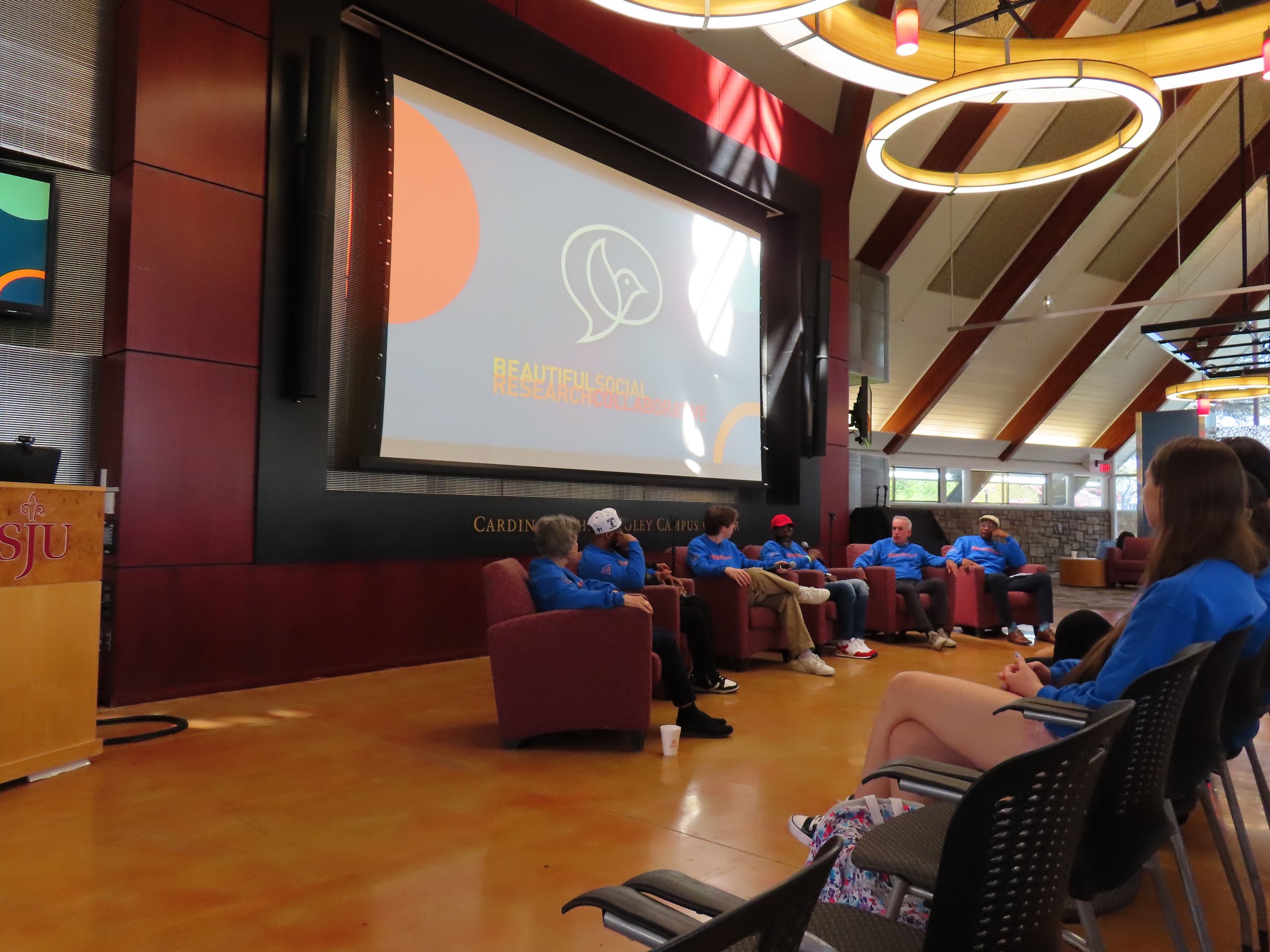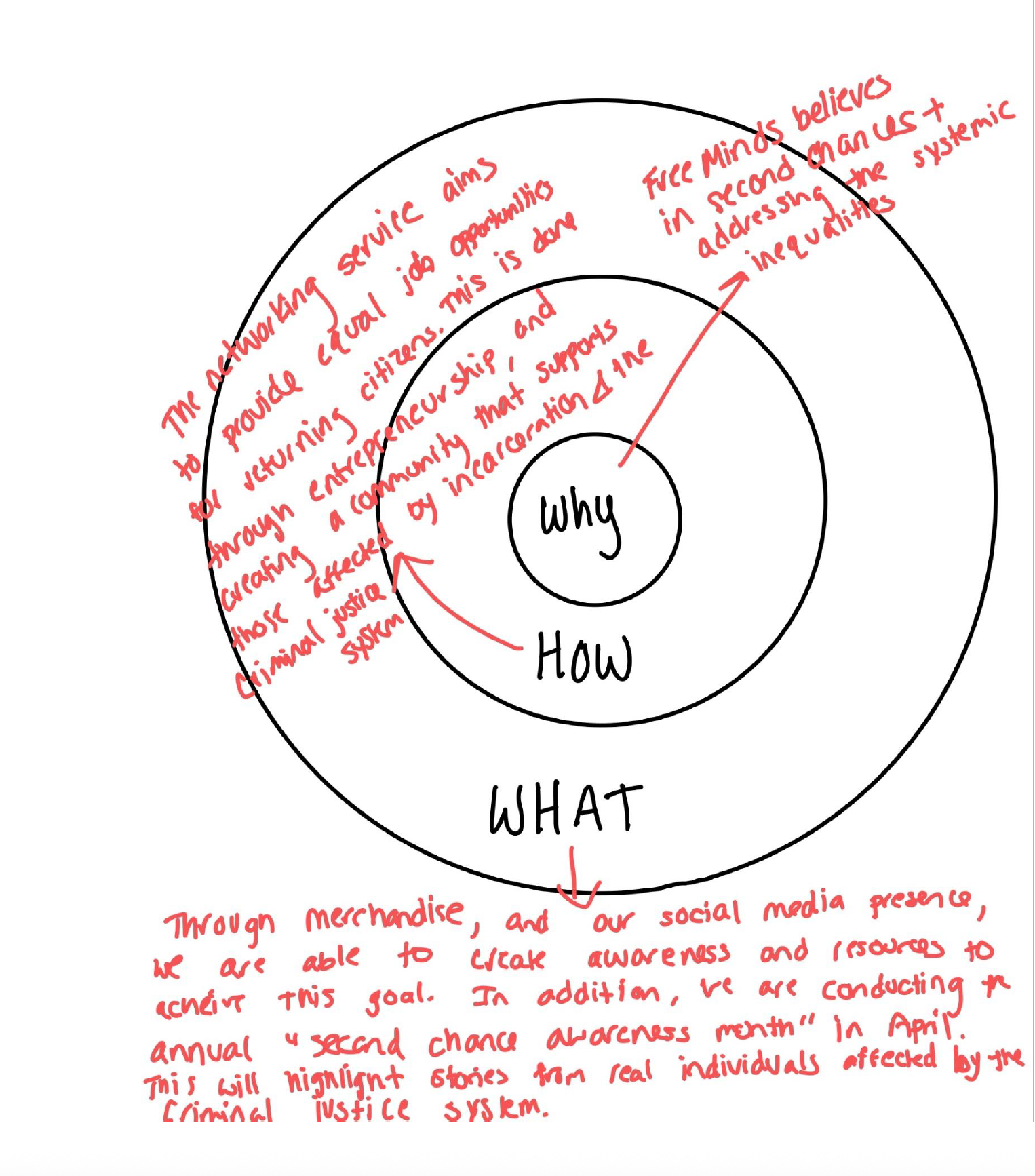Free Mind Network
Spring 2025
Fellow: Anneliese Ashley
Caroline Brauckmann, Carlina Hershock, Colin Myers, Rebecca Romito & Alexa Fichera

Community Partner
The Free Mind Network is dedicated to establishing a network that empowers formerly incarcerated individuals to achieve financial independence through entrepreneurship, all while spotlighting the discriminatory practices entrenched within a profit-driven, privatized justice system. Through the provision of training, employment opportunities, and additional resources, the organization aims to enhance the trade skills acquired during individuals' time in incarceration. Embracing the principle of second chances, Free Mind is driven by a mission to reduce recidivism rates and confront the systemic injustices pervasive in a punitive criminal justice system that obstructs genuine rehabilitation efforts.
Community Partner report
What happens when storytelling meets second chances?
In this report, our team desbribes the semester-long collaboration with Free Mind, a nonprofit founded by Stacey Torrance to support formerly incarcerated individuals through entrepreneurship. From launching a signature merchandise line to strategizing for a future documentary, we co-created a campaign rooted in justice, equity, and transformation. Highlighting real-world partnerships, media strategy, and the power of purpose-driven design, this report is both a reflection on our process and a roadmap for how media can drive social change.
Design Question
“How can we design a documentary and create merchandise that will uphold the second-chance values of Free Mind’s mission and share the stories of previously incarcerated individuals to allow them to reconnect with the community and gain support in their careers?”
This must achieve the necessary result of raising awareness about discrimination against formerly incarcerated people in the workplace. We have worked with Stacey on the merchandise and have shared it via social media. We have contacted people to get their information and bios
to post during our second chance awareness campaign. Lastly, we have marketed our annual Second Chance Awareness Month, which we did by posting on social media. This has been our driving factor since the beginning of our work with Stacey and with Free Mind, and it's something that we have been achieving.
Strategic Thinking
To help achieve these objectives, Stacey created a website with a podcast, newsletter, and testimonials from past participants of Free Mind. The organization is continually evolving, and with the help of B.Social, Stacey hopes to expand and enhance Free Mind by sharing stories of individuals who have faced similar experiences. We are thrilled to be a part of Free Mind's growth and eagerly anticipate the future.
We can create awareness and resources to achieve this goal through our new merchandise of crewnecks, T-shirts, hats, stickers, and our social media presence (posting moments from the Panhel event last year). In addition, we are conducting a new annual tradition of “Second Chance Awareness Month” in April, which will also be a big social media push, highlighting stories of second chances from real individuals affected by the criminal justice system. Focusing on our social media presence will raise awareness for these issues and demonstrate and make available the resources that Free Mind aims to create.
Our work is informed not just by collaboration but also by course readings and discussions, such as those exploring restorative justice and systemic oppression. These concepts have deepened our understanding of how social change happens and how media and storytelling can be used as tools for advocacy, education, and empowerment.
Co-Creation
During our prototyping phase, we prioritized equity, trust-building, and reciprocity in the co-creation process with Stacey. Open and honest communication played a key role as we fostered an environment of collaboration and shared decision-making. We regularly engaged in dialogue with Stacey to ensure alignment with his goals, incorporating his feedback to refine our approach and better reflect the essence of the social media campaign. This is especially important for Second Chance Awareness Month in April, when meaningful engagement with our audience relies on building trust and promoting reciprocity. Through this process, we’ve learned the value of inclusive decision-making and sustained collaboration.
Our co-creation efforts included collaborating on merchandise by gathering design options, color schemes, and cost breakdowns, which we presented to Stacey for ongoing input. We also worked closely with him on the social media campaign, using his feedback to shape content—most of which includes graphics and footage from last year’s panel event.
Examples of the Instagram posts as well as the merch designs.
Impact
Our main social objective is to lower recidivism rates while bringing awareness to discrimination within the justice system. With this social objective, there are other things we must consider and talk about, such as defining the root of problems like racism and mass incarceration. The Free Mind Entrepreneur Network wants to support previously incarcerated individuals and guide them in navigating life after prison. Free Mind also aims to support the families and communities of those impacted. By providing support and the right resources, we want to work towards lowering rates of recidivism and addressing the systemic inequalities in a punitive criminal justice system that discourages rehabilitation.
The Free Mind Entrepreneur Network also looks towards highlighting and supporting those who wanted and were able to become entrepreneurs. To help with this, Free Mind partners with entrepreneurs such as Muhammad Abdul-Hadi, founder and owner of Down North Pizza, to build and maintain meaningful connections. Muhammad was formerly incarcerated and now operates his own small business, giving back to Free Mind by advocating for fresh starts and offering insight and advice about life after incarceration.
Reflection
One key takeaway from this semester: when something works, keep it going. That’s why we were excited when Stacey proposed turning the Second Chance Awareness Month social media campaign into an annual initiative. By continuing to build on this foundation—and tracking performance through analytics—future teams can identify which messages resonate most, understand what drives engagement, and refine the campaign for even greater impact year after year.
Working with Stacey has been both exciting and deeply meaningful. Our partnership is built on mutual trust and a shared commitment to his powerful mission: supporting formerly incarcerated individuals as they re-enter the workforce, often in the face of discrimination and limited opportunities. Through this nonprofit collaboration, every decision we've made has been guided by purpose and aligned with our values—ensuring our work moves forward with integrity and impact.
To build on the strong foundation already in place, we recommend continuing to gather compelling sources and stories that can help shape the narrative arc of Stacey’s documentary. We also suggest collecting bios from all individuals who will appear in the film to ensure their voices are thoughtfully introduced and contextualized.







